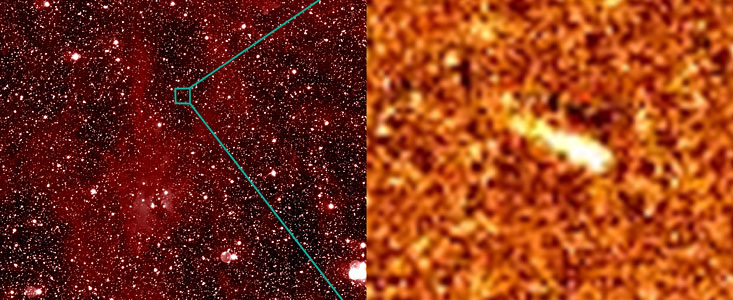Announcement
Pinning Down an Asteroid Collision
13 October 2010
Astronomers have used the ESO New Technology Telescope (NTT) and other ground-based telescopes, in conjunction with the ESA spacecraft Rosetta to study a very strange celestial object that resembles a highly unusual comet tail. Using the new observations they could reconstruct the sequence of events, and concluded that, in the first half of February 2009, a small rock with a diameter of only a few meters smashed into the asteroid P/2010 A2. This high-speed collision created the trail of dust that was discovered as the bizarre “comet”. The result is also confirmed by independent results from the NASA/ESA Hubble Space Telescope.
To work out the history of this unique event, Colin Snodgrass (Max Planck Institute for Solar System Research and ESO) and collaborators have combined images from ground and space, including those taken from a very different position by the Rosetta probe, which is currently far out in the Solar System beyond the orbit of Mars. By comparing the views from these widely separated viewpoints the team has been able to recreate a three-dimensional view of the event and show conclusively that the dust trail is the result of a collision, and that this unique object is not a comet.
Their results will appear in a paper, A collision in 2009 as the origin of the debris trail of asteroid P/2010, by Snodgrass et al., in the journal Nature on 14 October 2010.
Links
- Related press release from Max Planck Institute for Solar System Research
- NASA/ESA Hubble Space Telescope News Release
Contacts
Dr. Colin Snodgrass
Max Planck Institute for Solar System Research/ESO
Phone: +49 5556 979 358
E-Mail: Snodgrass@mps.mpg.de
About the Announcement
| Id: | ann1071 |

